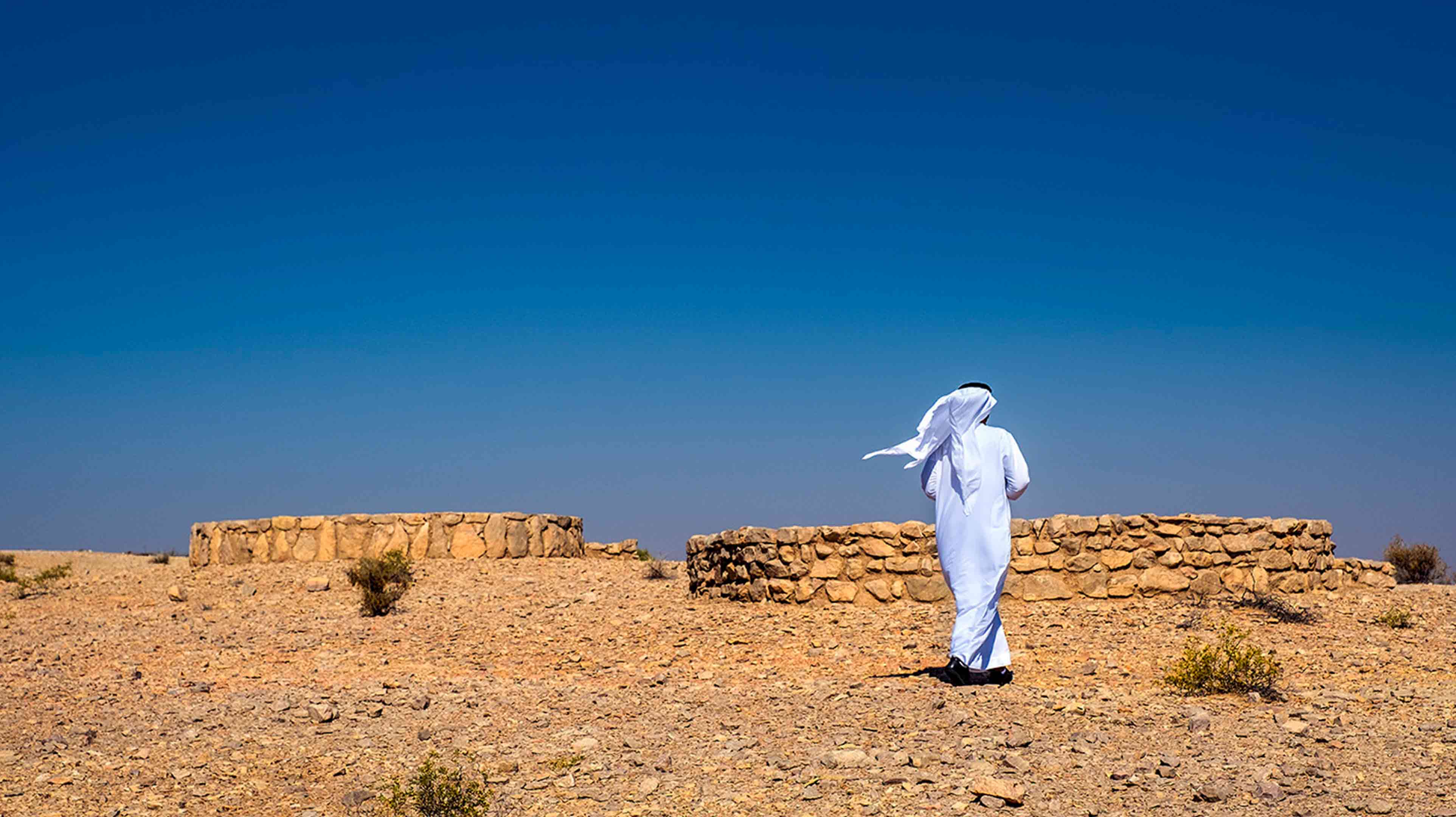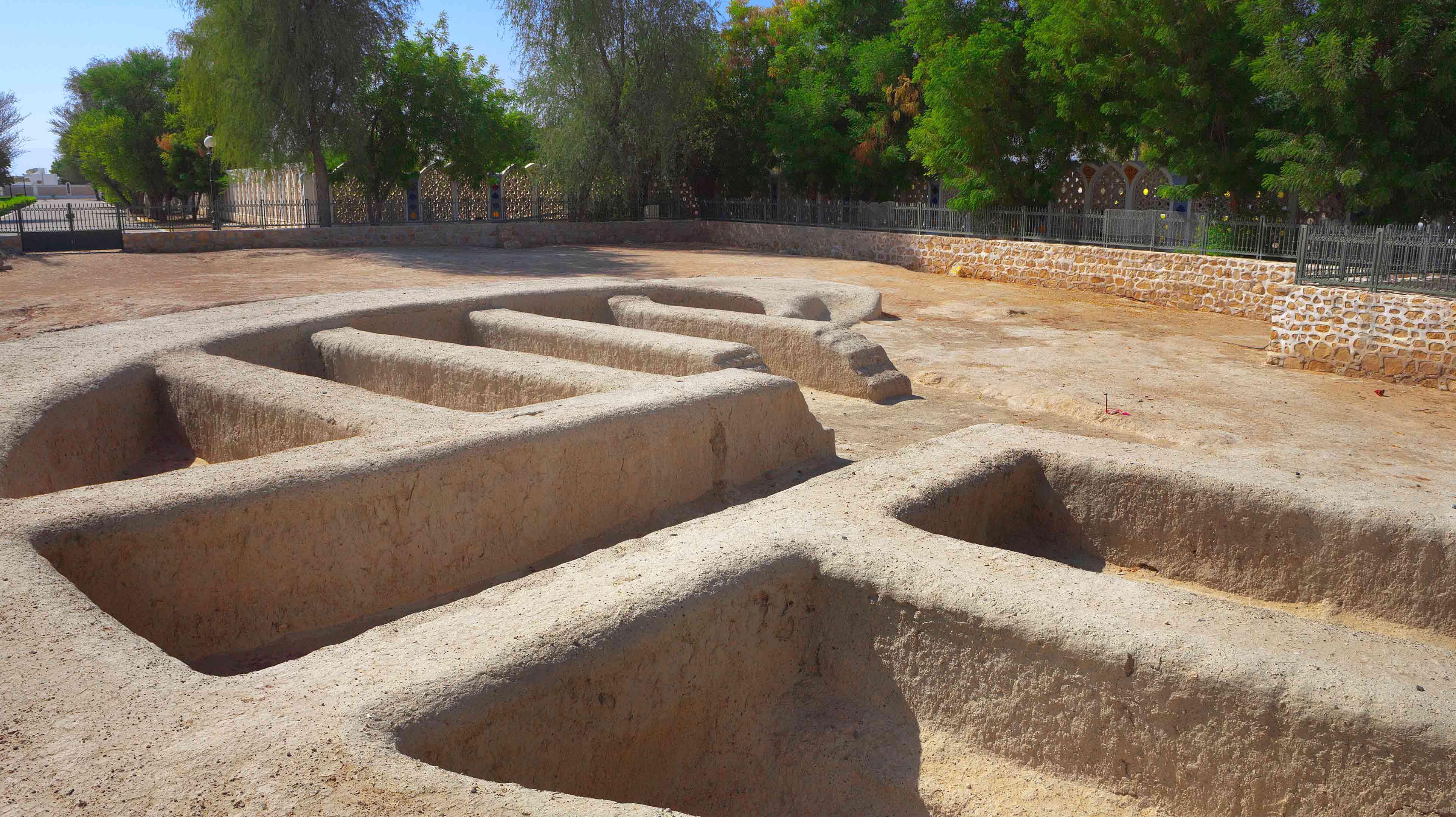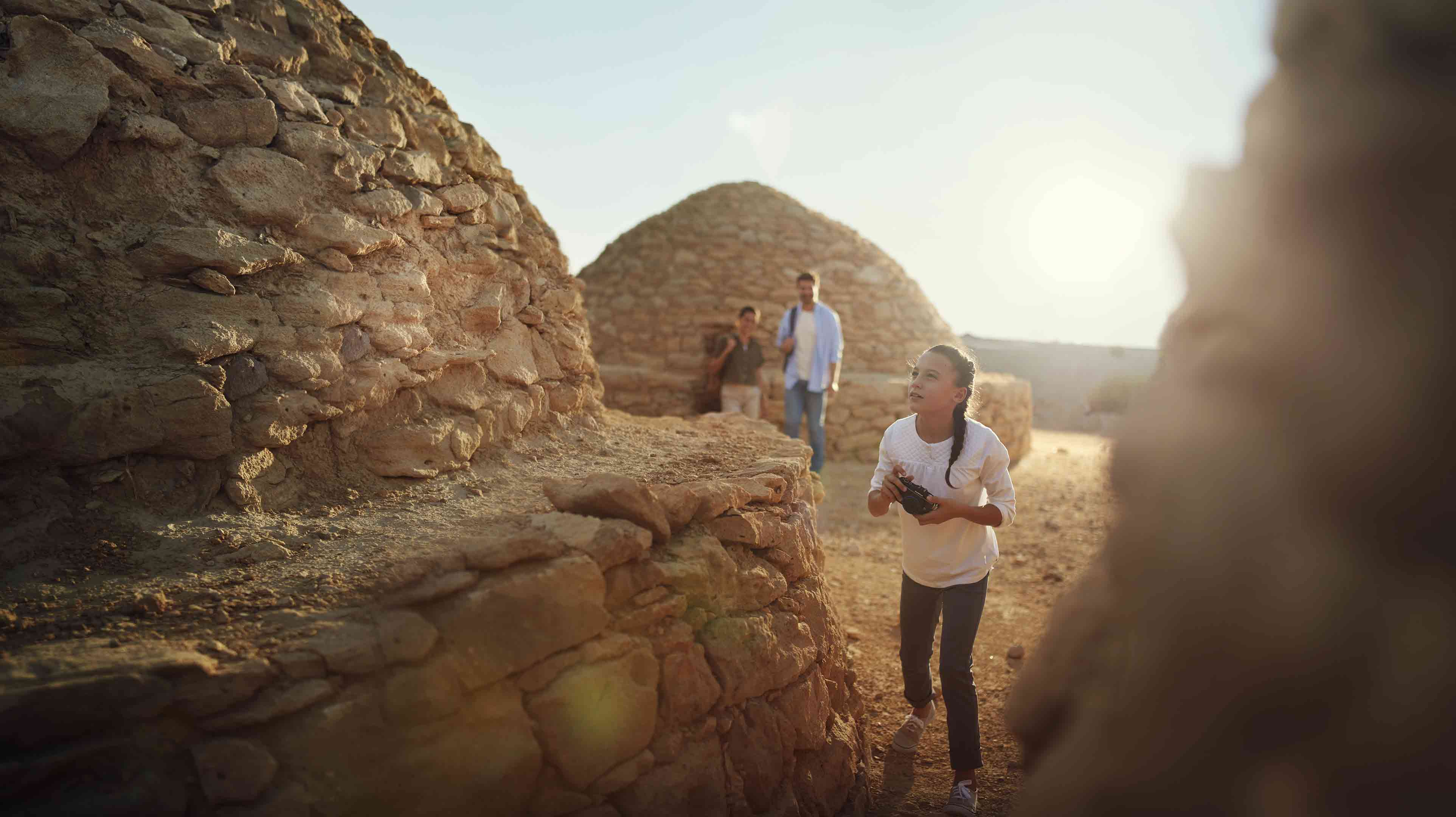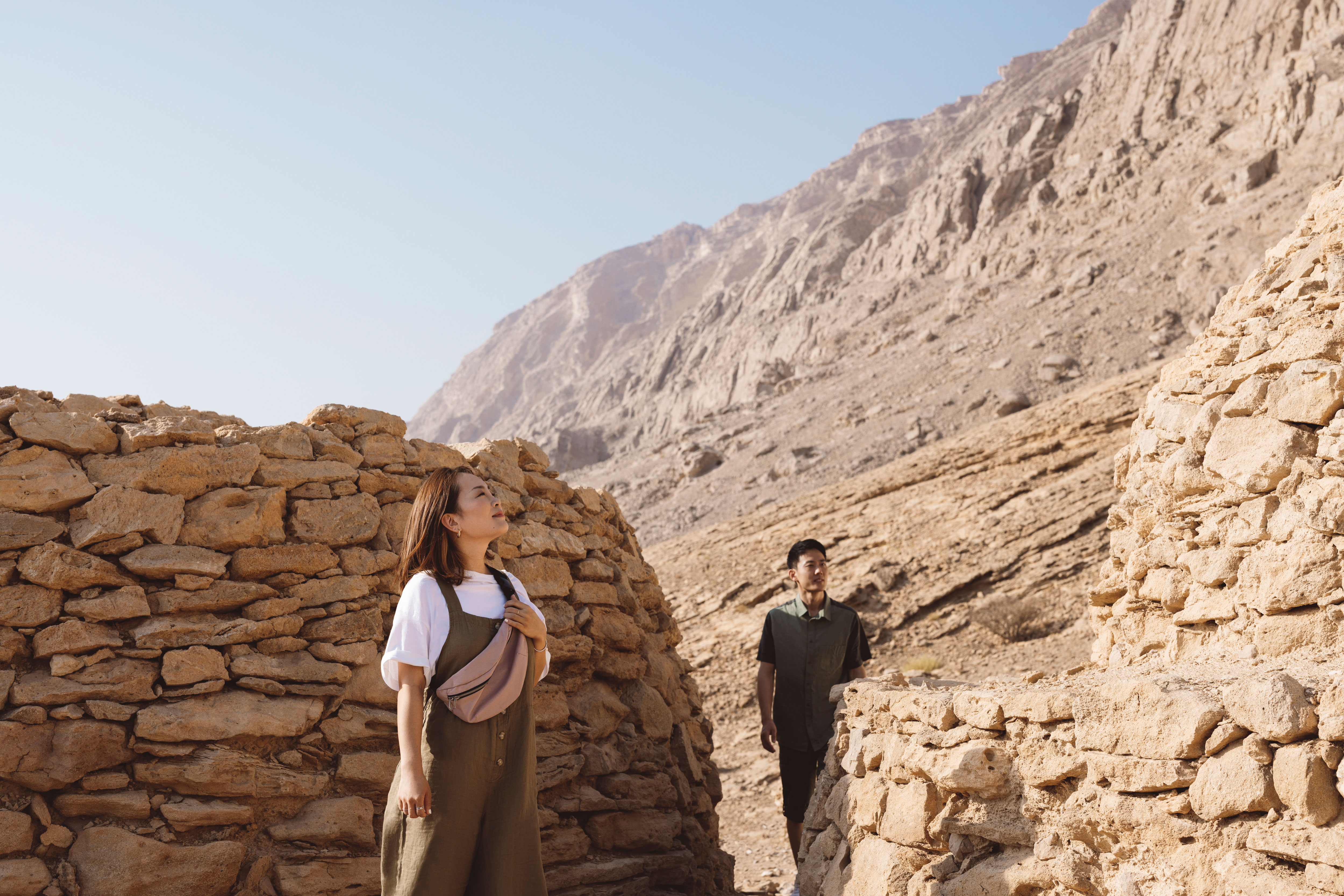Voir tout
UNESCO World Heritage sites
Various locations, Al Ain
Once a vital green oasis on the caravan route from UAE to Oman, Al Ain, which means The Spring, is the emirate’s lush heritage garden city, one of the world’s oldest continually inhabited settlements, and a UNESCO World Heritage Site.
Classified by UNESCO under cultural sites, the Al Ain world-heritage locations include the six Al Ain Oasis and the archaeological sites of Bida bint Saud, Jebel Hafit, and Hili. These incredible, ancient sites echo the stories of prehistoric culture and human occupation in this desert area since the Neolithic period, inviting you to literally step into the past.
Bida Bint Saud
To the north of Al Ain, several ancient stone-constructed tombs were discovered and excavated on top of the hard-to-miss Gharn bint Saud, a large stratified rock that rises from the desert and surrounding farms. The largest of these tombs is rectangular, eight metres long and six metres wide. Although some of the tombs may date as far back as 5,000 years ago, many of the tombs were re-used throughout the Bronze and Iron Ages.

Excavations in this area have resulted in many artefacts being found, including double-edged swords. A 3,000-year-old falaj (ancient irrigation system) was also discovered 1,500 metres to the west of Gharn bint Saud. This incredible piece of engineering attests to local ingenuity, obtaining water from deep below the surface. Currently, this falaj, as well as other examples from the Hili Archaeological Park and elsewhere in the UAE and Oman, provide the earliest evidence for the widespread use of this irrigation technology across the world. A large mud-brick building that included a central room with column bases dating back 3,000 years ago was also found near the falaj. These sites illustrate the critical role that the Bida bint Saud area, and Al Ain overall, played in the development of the Eastern Region of Abu Dhabi.
Hili Archaeological Park
The Hili Archaeological Site not only provides the earliest known evidence of an agricultural village in the United Arab Emirates but also contains other Bronze Age (3200BCE to 1300BCE) and Iron Age (1300BCE to 300BCE) villages, burial grounds and agricultural infrastructure. The early agricultural village is located at Hili Site 8 and dates to 3000BCE. In the period between 2500BCE and 2000BCE, the settlement at Hili expanded.

This period is called the Umm an-Nar period after the island off the coast of Abu Dhabi where the remains of this culture were first found. The largest collection of tombs and buildings from this period in the UAE is located at Hili. A number of these Bronze Age structures, located within the Hili Archaeological Park, are open to the public. You’ll find Hili near Fossil Valley, an area rich in a variety of fossils dating back many thousands of years to when it was covered by the sea.
Jebel Hafit Tombs
The 5,000-year-old Jebel Hafit tombs mark the start of the Bronze Age in the UAE. Excavations by Danish archaeologists in 1959 found evidence of ceramic vessels and copper artefacts in these tombs. These indicate the importance of maritime trade across the Arabian Gulf. The tombs are single-chamber tombs and are made of local, unworked or roughly cut stones. These differ from later Umm an-Nar tombs, mentioned above, which were made from finely worked blocks and contained the remains of hundreds of people.

